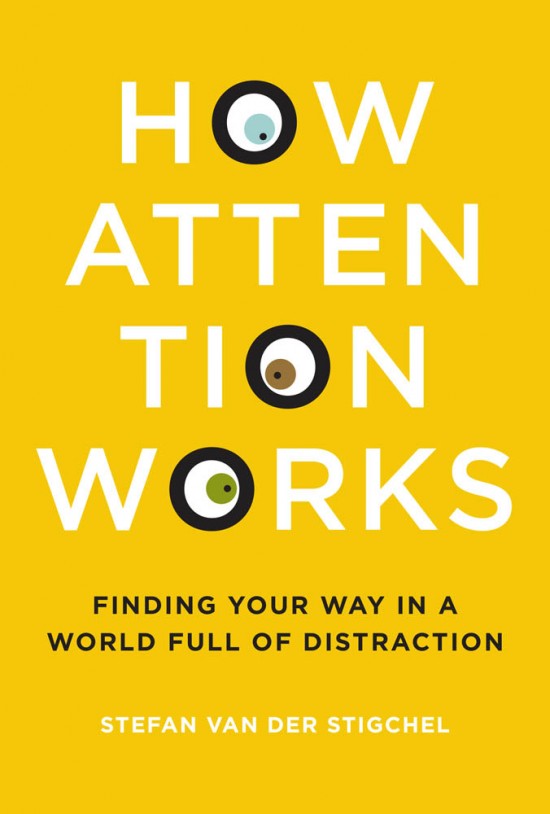How Attention Works by Stefan Van Der Stigchel
/How Attention Works: Finding Your Way in a World Full of Distraction
By Stefan Van Der Stigchel
Translated by Danny Guinan
The MIT Press, 2019
Attention has always been the Holy Grail of the advertising industry, and in the always-connected Internet Age, advertising has become an airborne contaminant, drifting on digital spores into almost every corner and facet of daily life. Our taxis, our phones, our buildings, our e-readers … everything in our lives wants to sell us things, and the vast corporations behind all those flashing messages also want to sell us to other corporations. And the entire scaffolding of that economy is erected on that one human capacity: attention. What is it? How does it work? What are its limits?
In 2016 Stefan Van Der Stigchel, a Professor in the Department of Experimental Psychology at Utrecht University, published his slim and deceptively muscular Zo werkt aandacht, now translated into English by Danny Guinan. How Attention Works digs directly into its subject on both the anecdotal level (there are plenty of stories of people successfully and not-so-successfully grappling with their attention) and a granular scientific level (frequent references to things like “unified field of view,” “change blindness,” “subliminal priming” and so on). His study covers an enormous amount of research in only a little more than 100 pages, all of it recounted with one eye trained on those corporations seeking to catch and shape our attention. These “attention architects,” Van Der Stigchel correctly points out, are engaged in a battle that’s raging all around virtually every single person on Earth - a battle in which the foot soldiers are only haphazardly armed to defend themselves:
Attention architects try every trick in the book: they hang up screens with moving images in busy city centers, add flashing banners to websites, and develop computer programs with blinking icons to attract our attention. Sometimes architects do this for our benefit and sometimes for their own, like when they want to sell us something. We have a certain level of control over our attention, and so we can try to ignore their attempts to distract us. But we don’t always succeed.
The quietly arresting note there - “we have a certain level of control over our attention” (how many of the author’s readers will have considered that they didn’t have complete control?) - is the kind of, as it were, attention-grabbing undercut that happens often in How Attention Works. Understanding what attention is, how it works, and what its limits are … these things have never been more important for non-specialists to understand and ponder. This vigorous little study comes to English-language readers at just the right time.
—Steve Donoghue was a founding editor of Open Letters Monthly. His book criticism has appeared in the Boston Globe, the Wall Street Journal, The Spectator, and the American Conservative. He writes regularly for the National, the Washington Post, the Vineyard Gazette, and the Christian Science Monitor. His website is http://www.stevedonoghue.com.
